Talk Story with Uncle Charlie was broadcast live from Kalaupapa, the Hansen's disease settlement on Moloka'i on August 17, 2001 from 10:00am. To 12:00noon. Through the courtesy of Pacific Helicopters Inc., myself, Kopa'a Tita, Val Monson and Bill Malo were flown over to Kalaupapa where we broadcast live, back to the KNUI Studio from Makia Malo's home, over looking the Bay of Kalaupapa. Mr. Malo's home is next to the switchback trail that ascends the two thousand five hundred foot cliff, which leads to the "topside" of Molokai.The show was a "round table type" story of the past and present, of the lives that residents experienced while at the Hansen's Decease Colony. Some of the guests on the show were there since 1946. The oldest living resident is 94 years old. With the help of Kopa'a Tita, Makia Malo, Bill Malo, Katherine Puahala and Val Monson, this show was one of the best I ever had. Mahalo to them all.
Leprosy as it was called back then, was brought into Hawaii with the arrival of the Chinese immigrants in the 1830's and was called "Ma'i Pake" (Chinese Sickness). The Native Hawaiian people were susceptible to this disease, because they were not immune to it. Other diseases, like Influenza and the common cold brought in By Capt. James Cook and others decimated the Hawaiian population in the late 1700 and early 1800 hundreds.
Laws were enacted to "isolate" anyone contracting leprosy and they were "banished" to Kalaupapa. It was in affect a "death sentence" at the time as conditions were harsh and unbearable and there was no cure for the disease. After being taken from their families, children who were under 12 years old were kept at Kalihi Hospital on Oahu, and when they became teenagers, they were taken to Kalawao County.
When Father Damien Joseph De Veusder arrived at Kalaupapa, conditions changed and he fought with the Catholic Church for materials to build homes and improve the lives of the residents at Kalaupapa. He later contracted the disease and died of it. He was buried at his Church he built named St Philomena, overlooking the Kalawao Bay. In 1936, his body was removed to Belgium and his hand was brought back in 1995 and buried in the grave where his remains were once, at St. Philomena Church.
The most traumatic impression when you go to Kalaupapa is the thousands of graves that are present when you enter the village. At Kalawao Bay, there are several thousand more graves, even in the bushes. The graves were not decorated and are a stark reminder of how devastating the disease was before the "cure" was found. The National Park, who will forever preserve this very historical place, is cleaning the area and exposing the grave markers for the first time in many years. They are also restoring the homes that the residents are living in and whoever passes away, their home is made into a monument, restored and kept as is. I witnessed a home that was preserved, even the old truck kept intact in the garage.
From the airport runway where our helicopter was waiting, looking back to the village and the thousand foot cliffs as its backdrop, one senses this place of serenity and peacefulness. Yet the feeling of hardship, pain and suffering emanates from the spirits of the thousands that lived and died here, isolated from their families and the rest of the world, for eternity. As we lifted off the runway, Makia and Katherine were waving goodbye to the sound of our helicopter (both are sightless), tears rolled down my eyes as I waved back to them, my heart full of aloha. I was happy to let their stories be told on my show. Mahalo Ke Akua (thanks the lord) Uncle Charlie
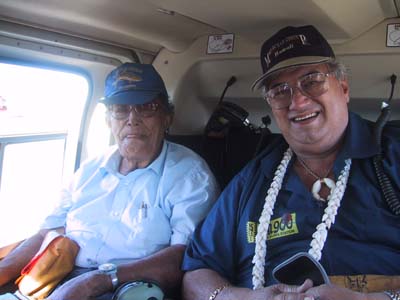
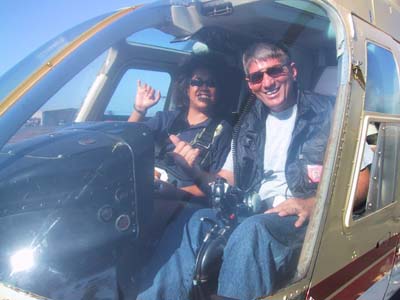
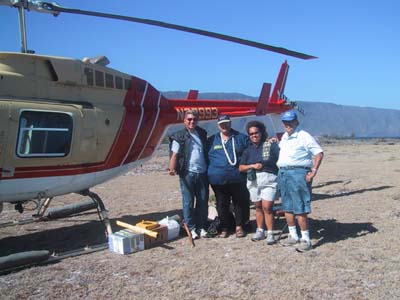
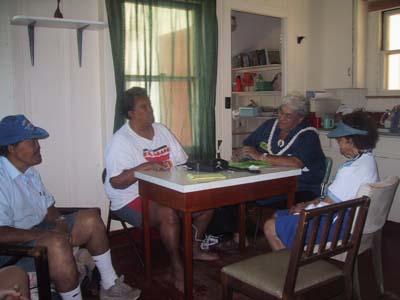
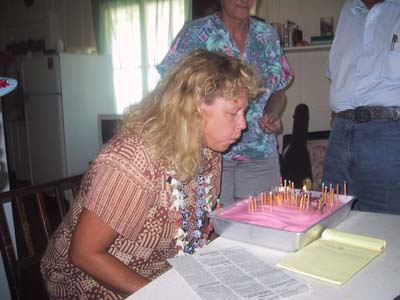
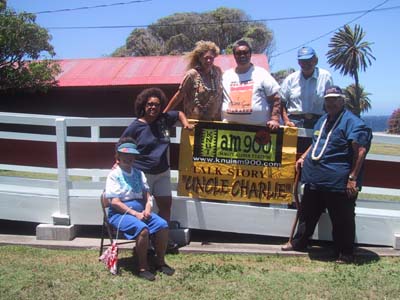
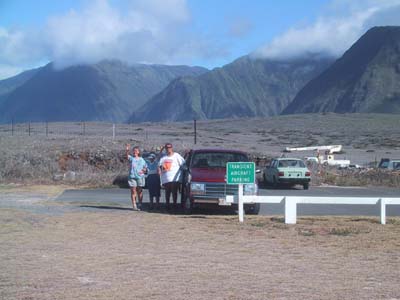
Ho`iho`i Mai
Return